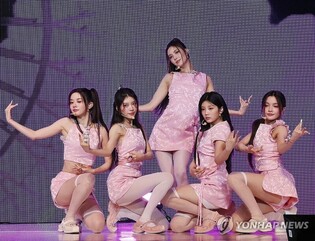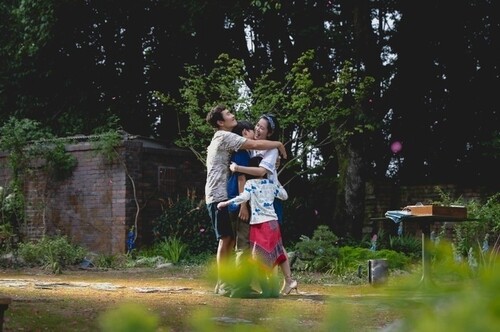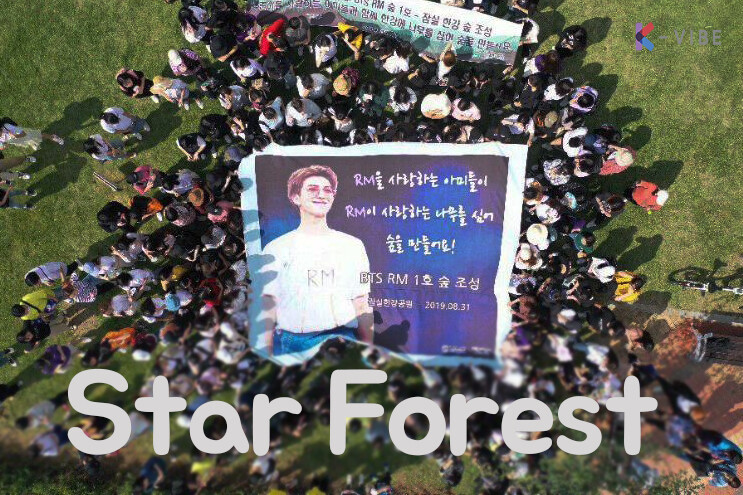
K-pop fans cherish bias by afforesting 'Star Forest'
By Lim So-yeon
With the emergence of Korean wave, South Korea’s environmental initiative has been diversifying into something more cultural and global, as seen in Seoul City’s “Star Forest” project.
The municipality-led project began in the late 2010s in collaboration with civil environmental group Korean Federation for Environmental Movement (KFEM). According to the plan, K-pop fans’ donation is used to plant trees in the designated areas along the Han River. Such groves are named after the donators’ favorite stars, or “bias.”
On Nov. 2, visitors from many countries came to see the star Forests in Nanji Han River Park in western Seoul. They busied themselves taking photos of red-tinted foliage and fruits, dedicated to famous K-pop stars and entertainers. A sign next to one of the groves read, “Welcome to the Seventeen Forest, a space for everyone to relax and listen to Seventeen’s music.” The grove was freshly planted last month.
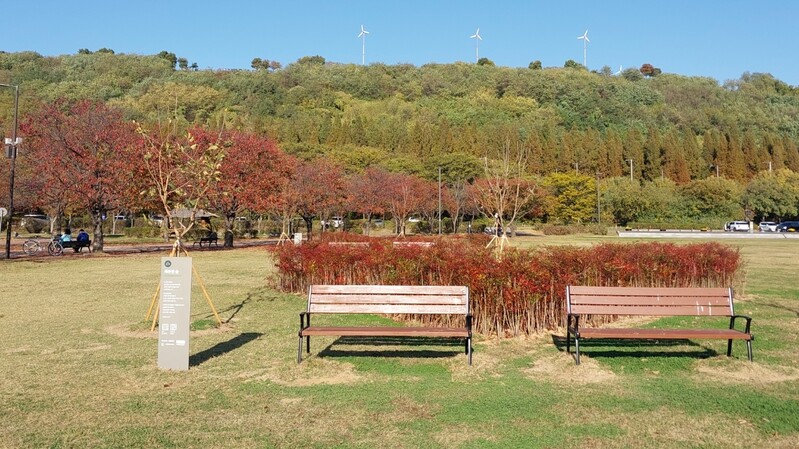 |
| ▲ The photo, taken on Nov. 2, 2023, shows a star forest dedicated to K-pop boy group Seventeen, located at the Nanji Han River Park. (Yonhap) |
The Star Forest in Nanji Han River Park kicked off with “BTS Forest No. 1” in April. Since then, a total of 10 star forests have emerged in Nanji Han River Park, dedicated to K-pop idols like NCT’s Doyoung, ASTRO's Moonbin, as well as trot singer Lim Young-woong and actor Park Seo-ham.
The Star Forest project extends to other parts of Seoul, too. Nine star forest zones are scattered in the riverside parks of Ichon, Gwangnaru and Jamsil, located in the central, eastern and southeastern Seoul, respectively.
Trudi Henderson, a 27-year-old U.S. singer-model, came to visit “J-Hope Garden” in Seoul Forest, eastern Seoul. She said, despite the BTS member's absence to due military service, she could feel his musical presence at the garden.
The prototype of a star forest dates back to the early 2010s. Since then, forests dedicated to various celebrities have been established in both domestic and international locations. This activity gained attention as a meaningful endeavor, with fans contributing voluntarily by planting trees on celebrities' birthdays or other commemorative occasions instead of the traditional gift-giving known as "jogong."
Star forests are praised for being accessible to fans, citizens, and for their positive impact on ecological restoration and climate change mitigation. However, some forests have faced criticism for neglecting maintenance and damaging the landscape. As a result, the trend is shifting towards not just creating forests but also cultivating them.
 |
| ▲ These undated photos provided by the Korean Federation for Environmental Movement show "RM Forest No. 1" at the Han River Park in Jamsil, created to mark his 25th birthday. (PHOTO NOT FOR SALE) (Yonhap) |
Representing this trend, "Yeowoon," a support group for singer Ha Sung-woon, established "Always Together with Ha Sung-woon Forest" at Gwangnaru Han River Park in May last year. In celebration of Ha’s birthday, the group planted several trees. Yeowoon's management team is actively involved in monthly tasks like weeding, cleaning the surroundings, and fans regularly pick up trash. They said that their initial goal was to ensure the park is clean and accessible to citizens, making the effort itself a source of joy.
Many K-pop fans are actively participating in the maintenance of the star forests. Cho Yun-hwan, the representative of KFEM’s fundraising team, said, "Fans use the star forests as gathering venues for fan meetings and events, and they engage in activities like watering the trees, weeding, and picking up trash during those times."
Choi Young-june, head of the Nature Restoration Division in Hangang Leisure Project Department in Future Hangang Headquarters, told Yonhap, "We take on the basic management, but when fans contact us, we provide equipment and personnel support." As there are many fandoms interested in participating in activities like "plogging," or picking up trash while jogging, Seoul is considering throwing related programs for them next year.
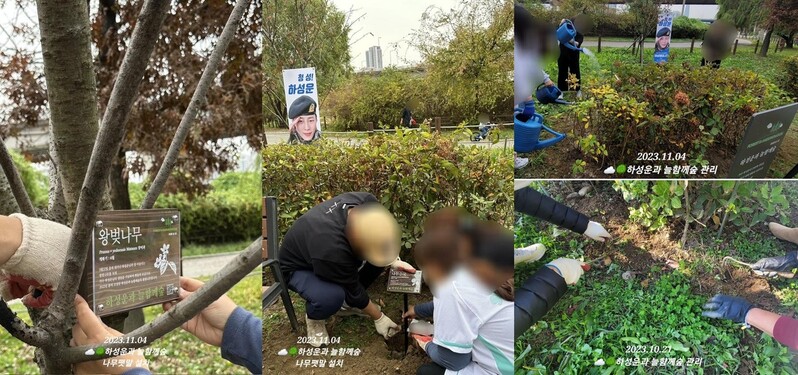 |
| ▲ These undated photos provided by the Korean Federation for Environmental Movement show fans taking care of the "Ha Sung-woon Forest" at the Han River Park in Gwangnaru. (PHOTO NOT FOR SALE) (Yonhap) |
The methods of establishing star forests are also diversifying. South Korean music streaming giant Melon runs “Forest Trimming” project, which sets aside 2 percent of its regular subscription income. Each subscriber can pick one singer. Once the savings reach 20 million won (US$15,300), they are donated to the KFEM to create a forest bearing the artist's name.
Han Min-woo, the leader of Melon's marketing group, said, "Customers can create a forest with their favorite artist's name, and as music industry players, we also get to contribute to society -- It is a win-win situation."
Star forests are also playing a significant role as ambassadors promoting South Korea's mature fandom culture to the world.
Kim Young-dae, a cultural critic, stated, "Fans are not just consuming content provided by agencies but are actively creating their own culture. This is a very unique case on a global scope." He emphasized that globally followed Korean stars have consistently delivered messages with positive influence. Fans have turned such messages into tangible actions, showcasing the positive aspects of the K-fandom culture, he added.
(C) Yonhap News Agency. All Rights Reserved









